
World Heritage

Sustainable tourism
Suomenlinna is a UNESCO World Heritage Site and one of the most popular visitor attractions in Finland. The growth of tourism in Helsinki, Finland and abroad can also be seen in Suomenlinna. The Governing Body of Suomenlinna is an active partner in networks where tourism is being defined and developed both in the nearby areas in Helsinki and on the national and international level.
During the past 20 years, the number of visitors to Suomenlinna has increased from 600,000 to one million. At the same time, the visitor profile has changed. At first, most visitors were Helsinki residents spending a nice summer day at the fortress, but now the majority of them are international visitors.
The sea fortress’s appeal lies in its history, sights and maritime environment. Suomenlinna combines large visitor numbers with cultural values that require conservation measures, the need among the Helsinki region’s population to have local recreational sites, and the day-to-day life of local residents. Sustainable tourism methods must be leveraged to ensure the site’s cultural, social, ecological and economical prosperity.
Sustainable tourism aims at minimising the negative impacts of tourism and maximising its positive impacts. The Governing Body of Suomenlinna strives to take sustainability into account in all its operations and also requires its stakeholders to comply with sustainable practices.
This page contains information about Suomenlinna’s sustainable tourism strategy , principles of sustainable tourism and the measurement and monitoring of sustainable tourism.
Sustainable Travel Finland label
In 2020, the Governing Body of Suomenlinna was awarded the Sustainable Travel Finland label as a sign of valued and long-term work towards sustainable tourism. Sustainable Travel Finland (STF) is Visit Finland’s programme for sustainable tourism that aims to offer tourism companies and destinations a concrete development model for sustainable tourism. Its objective is to help companies systematically adopt sustainable operating methods. Read more about the STF programme.


Sustainability Leaders United
- Others About Us
- How We Help
- Spotlight: West Sweden
- Explore Destination Stories
- Latest Interviews
- Hall of Fame
- Destination Changemakers
- Entrepreneurs & Managers
- Consultants
- Leading Scholars
- Influencers & Communicators
- Recommended Speakers
- DMO Leadership: Executive Briefing
- What Is Sustainable Tourism?
- Best Practices & Case Studies
- Expert Panel Insights
- Strategy Advice
- UNSDGS & Tourism
- Handbook on Sustainable Tourism Leadership
Destination Finland: Sustainable Tourism Strategies and Examples
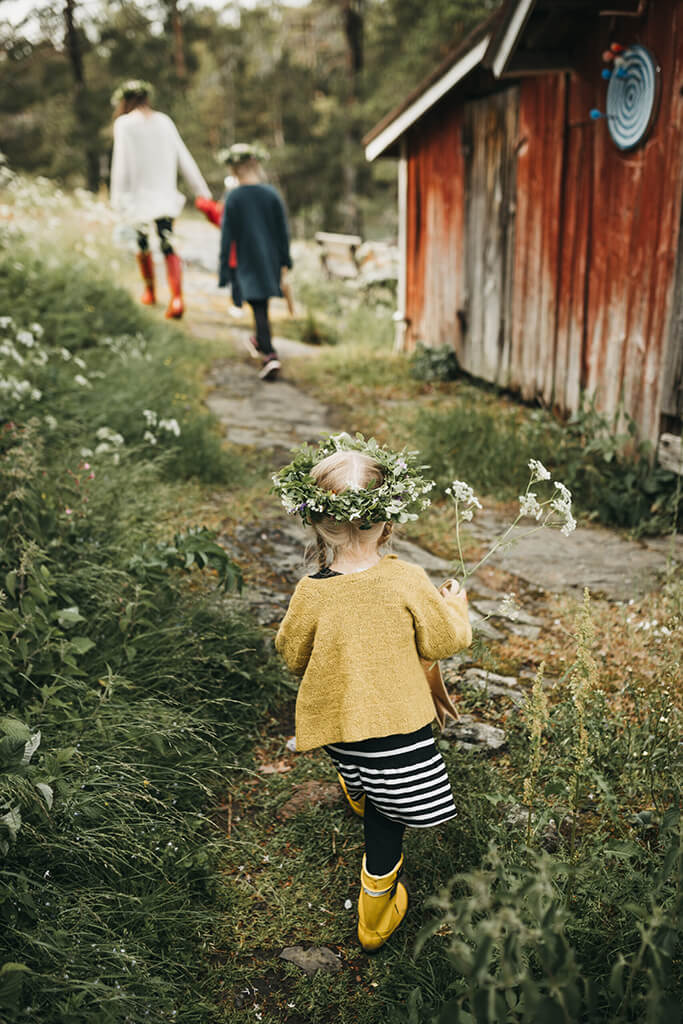
photo credit: Emilia Hoisko; Visit Finland
Finland consistently ranks as one of the most sustainable places on the planet. This is no surprise given that the country is home to vast amounts of natural beauty and a community of leaders taking concrete actions dedicated to preserving its resources and landscapes.
Join us as we take an in-depth look into Destination Finland’s goals, strategies and successes that make it a leader in sustainable tourism development.
Curious how destinations in other parts of the world approach sustainability? Visit our leading sustainable destinations section for additional stories and good practice examples!
Why does Destination Finland focus on sustainability?
Climate change is a major challenge that affects our living conditions, culture, societies and humanity as a whole. In the Arctic region, the climate is warming at triple the speed compared to the rest of the world. Many of Finland’s travel products and services depend on weather conditions, making them highly vulnerable to climate change. Protecting the country’s number one asset makes sense financially as well. Therefore tourism has to be developed as a responsible and growing service industry that generates welfare and creates jobs across Finland:
- The Finnish government has a very ambitious goal: By 2035, Finland aims to be a sustainable, carbon-neutral country and the first fossil-free welfare state.
- Visit Finland has a strategy in place to make sustainability the new travel industry norm and Finland one of the most sustainable travel destinations in the world.
- Finland’s updated tourism strategy identifies four priorities that will facilitate sustainable growth and renewal in the tourism sector, its first priority being supporting sustainable development.
How Finland approaches sustainability
- Since the 1990s, the Finnish travel industry has worked persistently on sustainable travel. The country’s groundwork for sustainability is solid. In the past there have been an abundance of concrete projects and other practical entities to support the industry in sustainability. During the last few years there have been huge steps forward, which has also spurred widespread international interest since few other comprehensive national models exist currently.
- Finland’s national strategy for 2019-2028: “Achieving more together – sustainable growth and renewal in Finnish tourism”.
- In practice, these measures are implemented within the framework of Finland’s sustainable growth programme , which involves Visit Finland.
- Currently there are about 70 destinations and over 900 companies participating in the STF programme. Find the most up to date numbers in this report.
- One of the tools related to measurement is a pilot version of the carbon footprint calculator for the Finnish travel industry. For now it is usable at the company level, but in the future the goal is to apply it to various development purposes, including destination calculations.
- Measuring carbon footprint is also one of Finland’s top data points collected from companies, as leadership believes providing proper tools for company use will lower the threshold for concrete action.
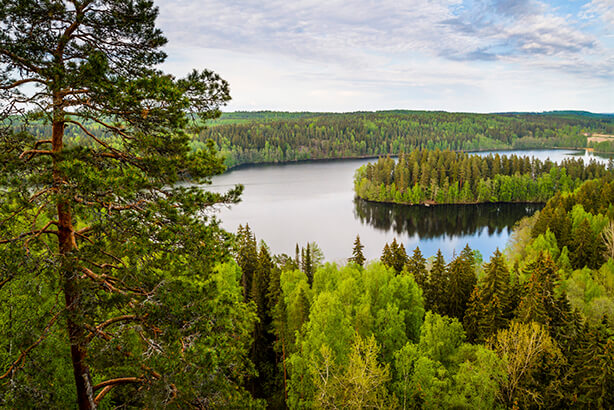
Credits: Vastavalo/Teemu Tretjakov; Harri Tarvainen; Mika Viitanen; Visit Finland
Focus on cooperation
The Finnish approach to driving sustainability is concentrated on the need for widespread collaboration. With a variety of companies, organizations and individuals working to lead and innovate sustainable efforts, Finland strongly believes that cooperation across the entire industry, and country, is the key to success.
More about sustainability and Destination Finland:
- Milestones of the Sustainable Travel Finland Programme
- The Finnish Tourism Industry’s Commitment to a Carbon-Neutral Future
- Get to Know Sustainable Travel Companies in Finland
- Sustainable Travel Finland: A Case Study
Our thanks to Business Finland and Visit Finland for sharing resources and information supporting our overview of sustainability in Finland.
Did you enjoy our sustainability spotlight on Destination Finland? Thanks for sharing!
Privacy Overview
For your kind of donation.
Principles of Sustainable Tourism
National parks and other protected areas are important tourist attractions. Working together with the parties managing them, protected areas can be used for tourism when these activities are reconciled with conservation objectives.
Metsähallitus Parks & Wildlife Finland and the UNESCO World Heritage Sites located in Finland have common sustainable tourism principles, which are used in national parks, nature destinations and historical and world heritage sites. The principles are observed in all activities and cooperation with tourism entrepreneurs.
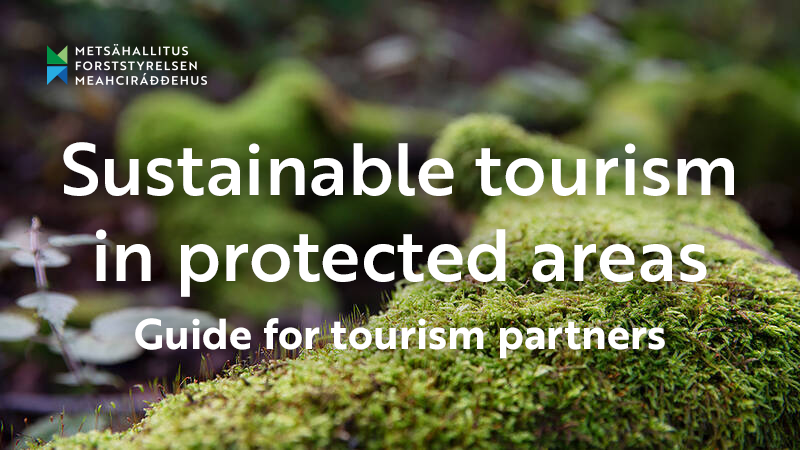
- Sustainable tourism in protected areas – digital guide (storymaps.arcgis.com)
We promote sustainable tourism. In order to achieve this goal, we cooperate to…
1 support the preservation of valuable features at the sites and promote their protection.
- Natural and cultural values are important factors in terms of attracting tourists.
- We inform visitors of the values of the site and their protection and encourage visitors to act responsibly.
- We develop services and direct the use of the sites, taking into account demand and the site characteristics.
- We mainly use existing routes and service structures.
- In construction, we also take account of local natural and cultural values.
- We ensure that tourism does not compromise natural or cultural values and we prevent any harmful impacts proactively.
2 Minimise the load on the environment
- We promote opportunities to travel to the destination on public transport with low emissions.
- We increase the duration of visitors’ stay in the area.
- We operate with energy and material efficiency.
- We set a good example in environmental issues.
- We enable and encourage visitors to act in an environmentally friendly manner.
3 Strengthen local aspects
- Local knowledge, research information, experience and culture provide a starting point for delivering experiences.
- The guidance provided is of high quality, and operators know the area and local conditions well.
- We increase the appreciation of the site by means of high-quality tourist services.
- We cooperate and offer local residents and visitors the opportunity to take part in the management and development of the site.
4 Promote use of the sites to increase health and well-being
- We encourage visitors to engage in versatile natural and cultural experiences on their own and in guided groups.
- We ensure the safety of all sites and services.
- Our services promote equality.
- We enhance visitors’ opportunities to increase their social, psychological and physical well-being.
- We promote local residents’ recreation and improve living conditions in the area.
5 Promote growth and job creation in the local economy
- We offer visitors high-quality services based on the attraction of the site.
- We cooperate actively with other operators in the management of sites and the provision of services, with clearly defined roles and responsibilities.
- We provide easily accessible and interesting information on the sites and services in advance using various channels.
- We encourage visitors to stay longer in the area.
6 Communicate together the values and services of the site
- We are committed to the values and basic messages of the site.
- We communicate consistently and responsibly with different target groups both in Finland and abroad.
- We collect feedback from stakeholders in order to improve customer satisfaction and our activities.
- We organise training and cooperation events for operators in the area.
- We encourage operators to commit themselves to these principles of sustainable tourism.
- The T4SDG Platform

- What are the SDGs
- Tourism and SDGs
- Companies CSR and SDGs
- Tourism in National SDG Strategies
- TIPs Toolkit
- SDGs Dashboard
- Tourism for SDGs
- CSR & Sustainable Development Goals
- Tourism in National SDG strategies
- G20 Tourism and SDGs Dashboard
- Initiatives
An initiative is a project or new idea that promotes tourism´s role in the advancement of the SDGs. This encompasses a wide variety of projects. Users are requested to include as much information as possible about the initiative. As well as include information if and on how people can participate or engage as partners.
- Accessible Tourism
- Sustainable Travel Finland
The Programme of Finnish Government, is ‘Inclusive and competent Finland – a socially, economically and ecologically sustainable society’. Meanwhile, Finland's Arctic Strategy, driving sustainable development in the Arctic, has set sustainable tourism as one of its priorities. Furthermore, the Ministry of Economic Affairs and Employment, responsible for Finland’s updated tourism strategy, has identified four priorities that will facilitate the sustainable growth and renewal of the tourism sector in Finland - first priority being supporting sustainable development. To help the tourism industry in Finland to put these strategies into action, together with various stakeholders Visit Finland has developed the Sustainable Travel Finland -programme, designed for tourism companies and destinations in Finland. With focus on all dimensions of sustainability (ecological, cultural, social and economic), Sustainable Travel Finland programme offers Finnish tourism industry a complete toolkit to adapt sustainable practices: a 7-step sustainable tourism development path. Although Sustainable Travel Finland programme aligns with internationally known sustainable tourism programmes and SDGs, it is built in consideration of regional and national development needs. Initially, the current state analyses recognized the following areas to develop: commitment, knowhow, planning, communication, auditing and measuring. Instead of adopting a foreign model to Finland, a national model was designed to address these needs, as well as regional differences. Companies and destinations that undergo the entire programme are awarded with the Sustainable Travel Finland label, providing travel trade and travellers an easy way to identify a tourism actor that takes sustainability seriously and make a responsible choice.
- https://www.visitfinland.com/sustainable-travel-finland/
- https://www.businessfinland.fi/en/do-business-with-finland/visit-finland/sustainable-travel-finland-label/
- https://www.visitfinland.com/sustainable-finland-pledge/

Sustainable Finland: The Wonder of Nordic Nature
If you are searching for a destination where you can fully enjoy nature, consider Finland. This northern country has a special bond with nature.
With forests covering 70% of their landmass and more than 180 000 lakes, Finland’s nature makes up the largest number of national parks in Europe, covering more than 10 000 square kilometres.
According to the World Health Organisation, Finland has the cleanest air in Europe, and places 3rd in the world. Finland is one of the countries that has a rare possibility to truly coexist with nature. Given the relatively small population and the fact that 70% of the country is forested land, it seems only reasonable that Finns have a deep appreciation for their space and the nature in Finland!
Even in Helsinki, the capital city of Finland, there are many lakes and green areas. Animals such as rabbits and squirrels live in proximity to people and are often seen on a daily basis.
In Finland, most of the electricity is produced in an environmentally friendly way. As countries around the world have set goals for reducing their carbon emissions in a joint effort to combat climate change; Finland’s goal is to create a carbon-neutral society by equalising carbon dioxide emissions and activities by the year 2050.
Sustainable tourism is thriving, as municipalities and the tourism industry work on a variety of initiatives. As nature areas and activities are a central aspect of Finnish culture, the possibilities truly are endless. Sustainable accommodation options are a complementary pairing to sustainable tourism, and there are some amazing options available in Finland.
Everyman’s Right
The term, ‘Everyman’s right’ is a prime example of Finland’s ability to coexist with nature. In Finland, everyone has the right to enjoy nature. Land and waterways are accessible. Everyman’s right applies to the freedom granted that every person has the right to access nature, can pick the berries or mushrooms, as long as one respects the boundaries of private residences and posted restrictions. Example; picking berries and mushrooms in the forest or parks is permitted, but not allowed in another person’s residence area, or yard. This basic concept of freedom applies to all on Finnish soil.
Blueberry picking usually takes place late July through late August. If you go foraging for edible mushrooms, the season runs between mid-August through early November. The natural blueberries are small, but sweet and is a favourite baked in late summer blueberry pies. Picking berries is a Finnish pleasure, so do not be surprised to see a forest full of Finns with their buckets and baskets!

A few recommended spots for visiting nature in Finland are;
Nuuksio national park.
Nuuksio National Park is located in proximity to Helsinki, Finland’s capital city. Travel takes approximately 1 hour travel time using public transportation methods, from Helsinki. One can get there by taking transport from the Helsinki Central Station to the Espoo Station, and then a 30 minute bus ride to the national park.
Nuuksio National Park offers nice restaurants, information centres and well maintained trails that are in harmony with nature. In addition to trekking, there are also available canoe rentals. Swimming in the lake is permitted, and a sauna lodge is also provided so that guests are able to fully enjoy nature in Finnish style.
Berry picking is also possible at this national park. Everyman’s rights experienced first hand, when the author of this post went berry picking, outfitted in rubber boots and long trousers/long sleeves for a day in the nature of Finland. Blueberries can be difficult to find at first. Blueberries are low to the ground, and offer black fruits – many to a plant. These low lying plants are generally found on the sides of walking paths in nature and have many berries per plant.
One of the highlights of Nuuksio National Park is their ‘Eco Camp’. Also referred to as ‘Night in the Tree’, this is considered to be the most carbon-friendly campsite in the world! What makes this sustainable accommodation option so unique is that one is spending the night in a tent suspended in the trees! Seeming as something that would exist only in the imagination, sleeping while suspended high in the trees is something few actually get to experience, and a wonderful night to remember!
The 2020 season has availability starting 1 June, until 30 September. Reservations are required.
1-2 prs for 3 prs Stingray Tentsile tree tent+ Trillium Hammock 190 EUR
3 prs for 3 prs Stingray Tentsile tree tent+ Trillium Hammock 255 EUR.
Package includes:
・ Tree tent + hammock
・ Sleeping bag, sleeping bag sheet, towel
・ Breakfast at the restaurant Haltia
・ Tickets for the main and special exhibitions at the Finnish Nature Center Haltia
-Tent huts for common dwellings, campfire firewood, teapots, cups, plates, tea, mustards, serviettes, tables and benches for tent areas.
·Drinking water
・ Indoor toilet and shower
・ Additional services:
Evening snack basket: water, sausage, mustard, sandwich, tea, chocolate, serviette. 20 EUR / 2 people.
E-Fatbike rental : from 55 EUR / 2 hours
Click here for details!
Lake Saimaa
Lake Saimaa is located in the southeastern area of Finland. This lake is quite famous for being the home of the endangered Saimaa ringed seal. This rare species of seal lives only in this lake. There are currently only 310 of these animals, and there are various programmes and activities in the local area to increase that number.
As with all endangered species, keeping distance is necessary to avoid stressing the animals. Only electric boats are used for touring the lake, in order to minimise the impact on the seals as much as possible. By utilising electric boats, there are no additional environmental pollutants created and the sound is quiet. It is possible to rent an individual canoe, but one must be certain to observe them only from a sufficient distance away as to not create undue stress for the animal.
The month of May is considered to be the ideal time to observe the Saimaa ringed seals. In May, Finland is moving into maximum daylight hours, so even in the evenings visibility is still very clear. Lakeland GTE is the local tour operator. They use the electric boats and give careful attention to their impacts on nature and the environment.
Some tips for touring:
- Do not use disposable containers for meals
- Do not leave rubbish
- Strictly observe all rules of the national parks
- When it is necessary to use any kind of motor-based machine, use one with the lowest possible emissions and ensure that it has been properly maintained.

Puumala Seal Watching cruise
Ecoboat information
Sustainable tourism company
When visiting Finland, one may have images of Santa Claus and Moomins. There is more to the country than that. It is a highly conscientious country with a culture that coexists peacefully with the surrounding nature. Finland + nature = A truly unforgettable experience! Would you like to receive more information like this direct to your inbox? Click here to join our newsletter!

You May Also Like

Top Sustainable Small Luxury Hotels in Europe

How You Can Book a Sustainable Trip to Turkey

The No. 1 Sustainable Travel Destination: Sweden
One comment.

Thank you for sharing this article!
Eco-hotels & Sustainable Accommodation in Lapland
Looking for green hotels, responsible resorts and other eco-stays? Lapland has a wide choice of sustainable and responsible choices for your upcoming holiday.
Sustainability is a cultural cornerstone in Finland. Naturally when it comes to offering hotels, apartments, cabins and other accommodation, there’s a wide range of sustainable and responsible choices. Below you’ll find a wide range of eco-friendly accommodation, from geo-thermally heated hotels to carbon neutral ski resorts to apartments and sustainable choices that use renewable energy.
Here are some of Lapland’s sustainable accommodations:
Coolest (Responsible) Hotels in the World
Hotels don’t always have the best track record for being environmentally responsible. In Finnish Lapland, however, hotels are responsible, certified and comfortable. Check in to some of our most responsible hotels.
- Sokos Hotels (Green Key certified)
- Arctic TreeHouse Hotel (Green Key)
- Wilderness Hotel Kirikeskus (Sustainable Travel Finland, Green Key)
- Hullu Poro (ISO: 9001)
- Santa’s Hotels (ISO: 14001)
- Scandic Hotels (Nordic Swan Ecolabel, Green Globe, EU Ecolabel)
- Lapland Hotels (Green DMN, Motiva’s Energy Efficient project)
- Ski-inn Hotels & Apartments (Carbon neutral accommodation)
- Arctic Light Hotel (WWF Partner company)
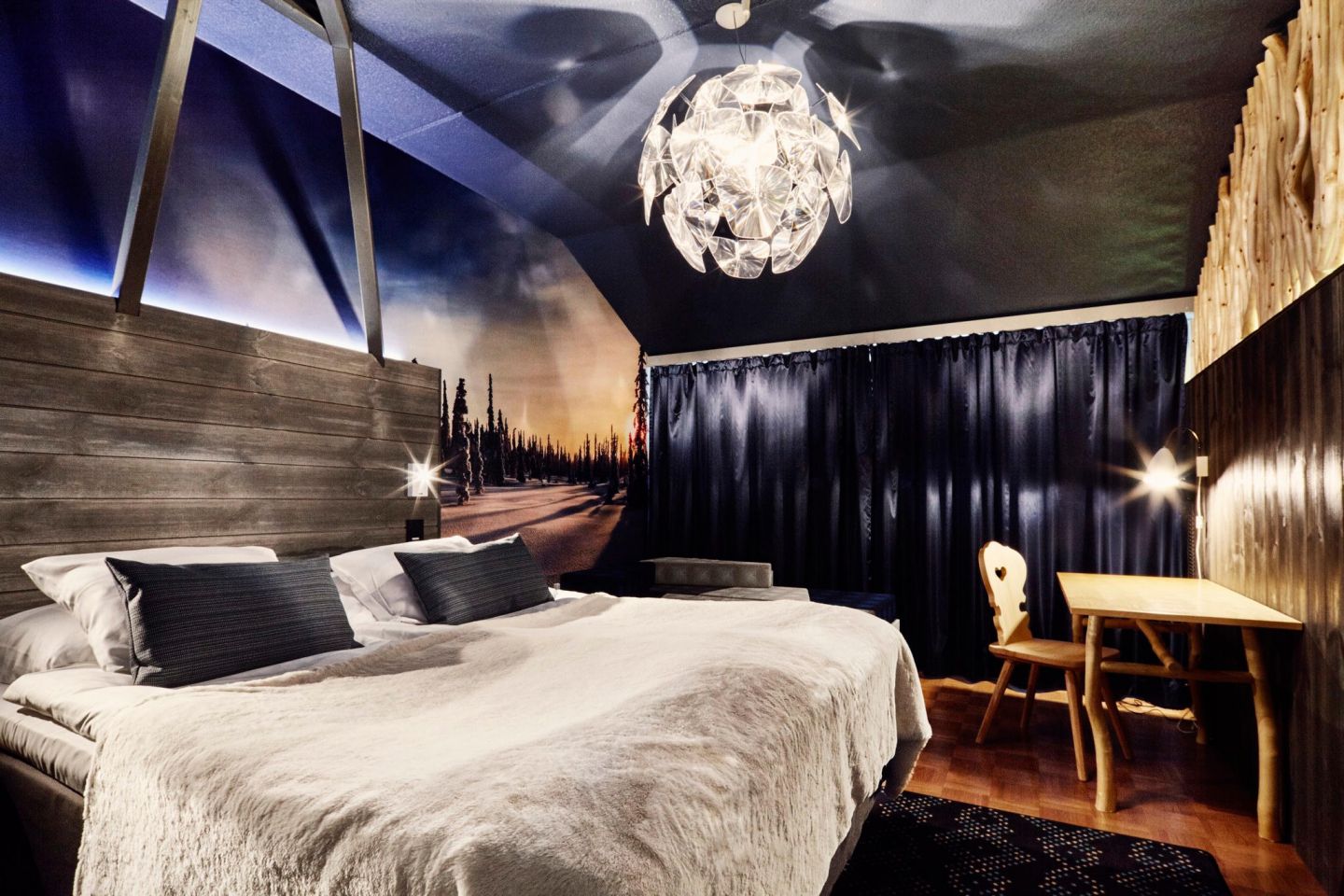
Sustainable Resorts & Other Green Accommodation
Farmstays, wilderness cabins, off-grid accommodation and more. When you move away from the standard, “expected” accommodation, not only do your choices become more interesting–they often become more sustainable too!
- Sallatunturi Tuvat (Green Key)
- Holiday Village Himmerki (Sustainable Travel Finland, Green Key)
- Naali Lodge (Sustainable Travel Finland, Green Key, Green Activities, EKOEnergy, Ethik’Hotels)
- Adventure Apes (Green Key, Green Start)
- Ylitalo Reindeer Farm (Green Key)
- Cranberry Cabin (Green Key)
- Holiday Village Valle
- Arctic Land Adventure – Reindeer Ranch & Glass Igloos
- Sunday Morning Resort (Carbon neutral accommodation)
- Pyhä Igloos
- Ollero Eco Lodge (Green Key, Green Activities)
- Harriniva Hotels & Safaris
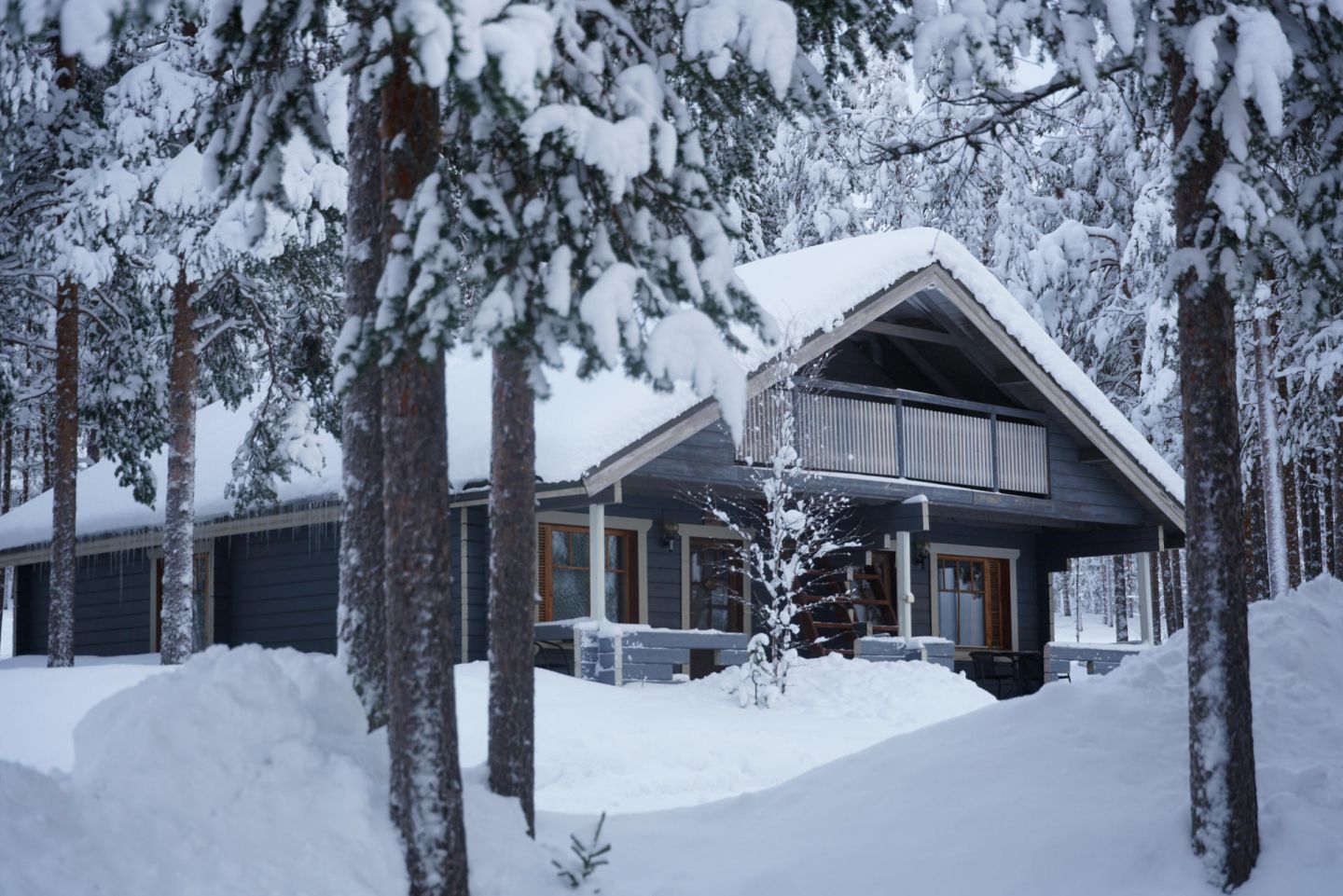
Of course, where you sleep is only half of a sustainable visit to Lapland. Check out some eco-friendly activities to go with your green accommodation.
Related posts
Aurora bubbles & cabin delights - special winter accommodation, 9 best reasons to visit finnish lapland in winter, how to travel responsibly in lapland - sustainability guide for travelers, 8 best reasons to visit lapland in the summer, lapland: made for skiing, taste of northern nature - local food from lapland, do the social.
- @onlyinlapland
- OnlyInLapland
Travel sustainably in the Lahti Region
In the Lahti region, you can experience pure and diverse nature sustainably. Taking care of nature and lakes is a goal shared by everyone in our region. Lahti is Finland’s leading city when it comes to environmental issues, a frontrunner in climate work, a pioneer in sustainable and smart solutions and the European Green Capital 2021.
Lahti – The European Green Capital 2021
Lahti was the first Finnish city to get the title of the European Green Capital in 2021. This was an acknowledgement of the work Lahti has done for decades to develop into a more environmentally friendly and sustainable city that belongs to everyone.
Legacy of the European Green Capital – Technical Visits to Lahti
Visit Lahti organises professional, so-called techical visits, for companies in the region. Guided tours are organised in particular in companies pioneering in environmental work and clean tech businesses in Lahti that are among the elite in their industry.
On your visit, you will get to know the solutions of the City of Lahti and the ground-breaking environmental actions of city-owned companies and local businesses. Destinations include Salpakierto , Lahti Energia , Lahti Aqua and Lahden Talot rental housing provider. Please fill in the adjacent delegation visit form to book a visit.
Tips for sustainable tourism
Lahti is a city of bold environmental actions. The nature conservation work regarding Finnish Lakeland and Lake Vesijärvi has been ongoing for decades, bringing with it unique environmental expertise to the city. Our tap water, naturally filtered pure by the Salpausselkä ridges, is the best in the world!
The Lahti region provides a stunning setting for enjoying the great outdoors and clean nature. Walking, cycling, low-emission taxis and public transport are all great options for getting around Lahti! Spend your night at a hotel or cottage with environmental certification and enjoy clean and delicious locally sourced food! The Lahti region is the choice for environmentally conscious travellers!
Sustainable Round-Trips in Lakeland Finland
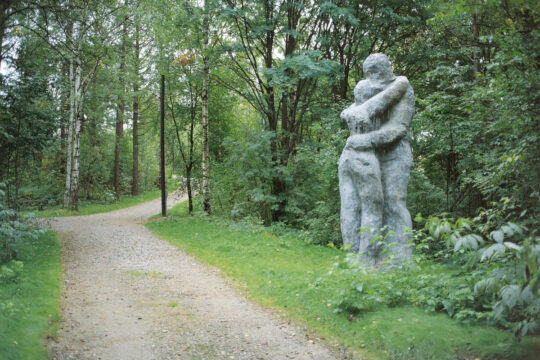
Let's get some fresh air!
During this round-trip you can experience the best of capital area and Finnish Lakeland in sustainable way! The tour includes accommodation either in high-end private lakeside villas, green hotels and countryside inn, local and organic food, guided urban nature tours and tips for sustainable visits, restaurants and shopping.
Duration: 9 days/8 nights
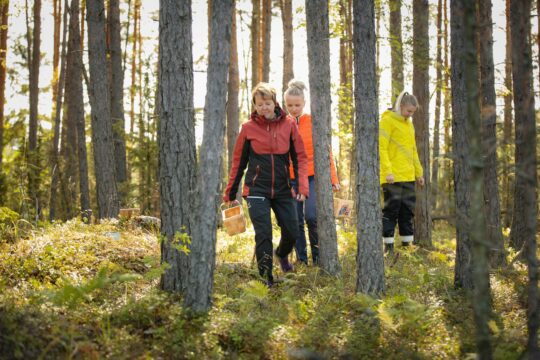
Spend a holiday in Lakeland
During this round-trip you can experience the best of Helsinki and Finnish Lakeland in sustainable way! The suppliers included in the program highlight ecological sustainability and specifically address climate change, yet also consider social sustainability. Most of them already has a certain eco-certification (Green Key, Green activities label, Nordic Swan Ecolabel, Sustainable Travel Finland label) or they fulfil other specific criteria like Helsinki Marketing’s Think Sustainably criteria.
Duration: 8 days/7 nights
Something for all the senses
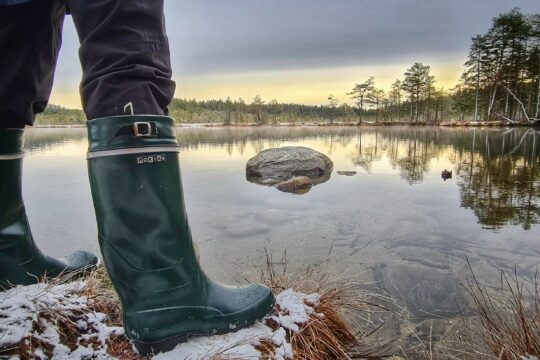
The Lahti region provides a stunning setting in which to enjoy nature at its freshest and purest! Head to Salpausselkä Geopark—formed by the last Ice Age—that is currently applying for a UNESCO Global Geopark status. Or perhaps you would prefer Päijänne National Park, which consists of protected esker islands and is also part of Salpausselkä Geopark.

The high-quality specialty shops in the Lahti region tempt visitors to make finds. Whether you are looking for design, antiques, vintage fashion, nostalgia, collectibles or vintage and design furniture, we have it!
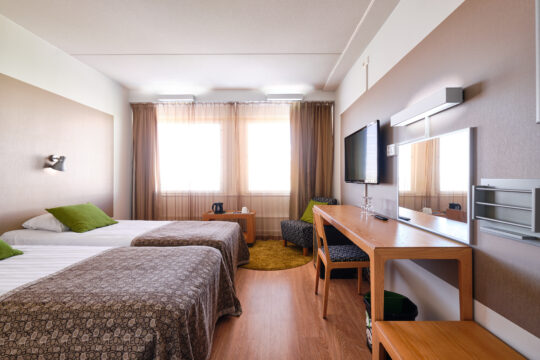
Accommodation
Hotels and cottages must comply with strict regulations in order to receive environmental certification. These include sustainable waste management, water and energy consumption and environmentally friendly suppliers.
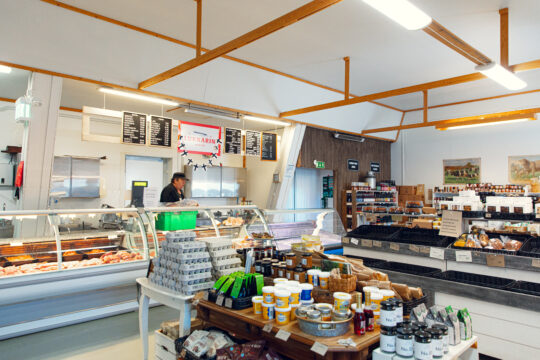
The Lahti region serves pure local food and the best tap water in the world!

A responsible meeting arises from ecologically, socially and economically sustainable solutions. We have made a guide to help you with these choices. It reminds you of things that need to be addressed in different areas of meeting planning. Lahti Region has been awarded the Ecocompass certificate, which also indicates our commitment to responsibility.
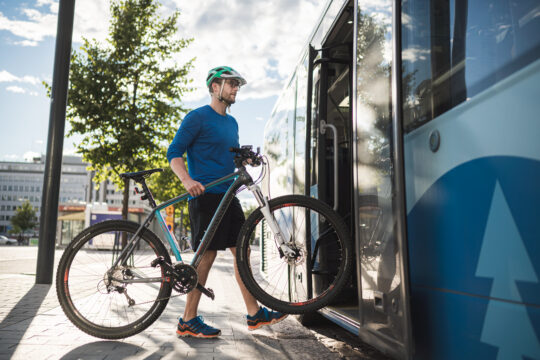

Transportation
Short distances and well-maintained bike and pedestrian paths make walking and cycling an appealing alternative when getting around Lahti. The Lahti region also offers great cycling routes! The Lahti region’s public transport buses have the lowest emissions in Finland.
Seven environmental facts about Lahti
- 01 Lahti will be a carbon-neutral city by 2025 as the first major city in Finland.
- 02 The success story of Lahti as a pioneer in environmental expertise stretches back all the way to the 1970s and the restoration of Lake Vesijärvi.
- 03 Thanks to the long-term development of waste management, Lahti has new kinds of jobs in circular economy companies, and as much as 97% of household waste is recovered.
- 04 Lahti has already cut down its greenhouse gas emissions by 70% compared to the level of 1990.
- 05 In Lahti, public transport is carried out with a bus fleet with the lowest emissions in Finland.
- 06 Lahti is the first city in the world to introduce personal transport emissions trading for its residents.
- 07 Lahti aims to become a waste-free circular economy city by 2050.
Lahti Region Ltd is committed to sustainability and environmental work
Lahden seutu – Lahti Region Ltd has been awarded the EcoCompass environmental certificate. EcoCompass is an environmental system with 10 criteria on the basis of which companies manage their environmental responsibilities and operate sustainably. As a regional tourism organisation, Lahden seutu – Lahti Region Ltd wants to encourage other companies and partners with its operations to develop their own operations according to the principles of sustainable development. Lahden seutu – Lahti Region Ltd has also been awarded the Sustainable Travel Finland label.
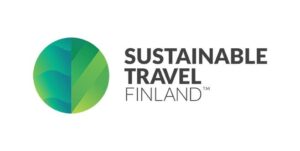
Lahden Seutu – Lahti Region Ltd is also a partner company of the “ We Speak Gay ” network. With this partnership, we are committed to promoting LBGTQ inclusiveness in our own communication and promoting the development of LBGTQ tourism in our region.
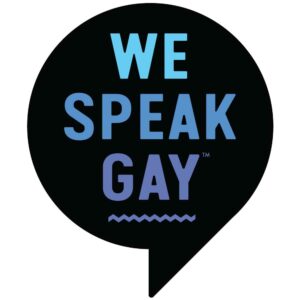
Lahden Seutu – Lahti Region Oy is a signatory of The Glasgow Declaration on Climate Action in Tourism . By becoming signatory of this declaration we agree to implement the global commitment to halve emissions by 2030 and reach net Zero as soon as possible before 2050. Lahden Seutu – Lahti Region Oy has calculated its own CO2 footprint in 2022 and published its Climate Action Plan (CAP) .
Our region is applying to become a sustainable tourism destination in Visit Finland’s Sustainable Travel Finland programme, and we encourage companies in the region to apply for certificates that support sustainable tourism. In practice, the sustainable operations of a tourism industry business mean minimising food waste and waste in general, using environmentally friendly detergents and supporting the local economy by using local raw materials, ingredients and services, among other things.
An important incentive is the development work of Salpausselkä Geopark. The geopark created together by six municipalities has got the UNESCO Global Geopark status in 2022. In the Global Geopark network, members strive to promote sustainable tourism and other sustainable development goals in the UN Agenda 2030. The expertise of the Salpausselkä Geopark unit supports our regional organisation on the development path of sustainable tourism.

Green Paradise Awaits: 10 Alternative Destinations For Sustainable Tourism
- Sustainable tourism initiatives prioritize eco-friendly choices, limit visitor numbers, and incorporate renewable energy into development plans.
- Costa Rica, Slovenia, and Sweden are examples of countries actively supporting sustainable tourism with their renewable energy investments and sustainability regulations.
- Alternative destinations such as Botswana, Mongolia, Uruguay, the Azores, Finland, Norway, and Latvia offer sustainable practices and opportunities to experience untouched wilderness while minimizing carbon footprints.
Any guide to ecotourism and eco-travel will say that sustainable tourism is an important part of a country’s plan to attract and support visitors. While tourism plays a huge role in many nation’s economies, it can help or harm a country depending on how responsibly it's handled. Of all the things to be aware of when traveling sustainably , one important factor is to prioritize sustainable tourism initiatives and avoid going to overcrowded destinations that are suffering from overtourism.
Sustainable tourism initiatives are those that incentivize companies to make eco-friendly choices, limit the number of visitors to an area or region through tickets or permits, and incorporate renewable energy into their development plans. They also include sustainable missions that travelers can get involved with . Within the umbrella of sustainable tourism comes alternatives to popular destinations affected by overtourism. So, rather than visiting such places where overtourism is a problem, check out these alternative sustainable destinations that are succeeding with eco-friendly and sustainable practices.
Related: 10 Most Beautiful Ecotourism Destinations To Visit In Europe (& What To Do There)
Costa Rica is frequently celebrated for its commitment to sustainability and preserving the diverse wildlife in the nation. Costa Rica is home to nearly 6% of the biodiversity on the planet.
What is Costa Rica doing to support sustainable tourism?
Costa Rica is striving to be a carbon-neutral country in the next few decades, putting sustainability at the forefront. It’s not a practice but a way of life in this Central American nation. Costa Rica has invested in renewable energy, including solar and geothermal power as a means to this end.
Slovenia, a country in Central Europe, is one of the best destinations for eco-travel because it's pursuing sustainability with a passion. Green travel is part of the tourism board’s draw to attract eco-conscious travelers to this destination.
What is Slovenia doing to support sustainable tourism?
Slovenia’s government has created the “Green Scheme ” called SLOVENIA GREEN. This initiative allows tour operators and other tourism services to use the SLOVENIA GREEN label as an indicator that they comply with certain sustainability regulations. This is a useful way for travelers to book eco-friendly travel services in Slovenia.
Eco-travel and ecotourism are important , especially to a country like Sweden. In fact, a report from Euromonitor International in 2020 put Sweden in the top spot for Sustainable Travel Index Rankings. The country has a good reputation for its sustainability practices, and the tourism board markets this as part of the appeal of visiting Sweden.
Clean air, clean water, and low levels of carbon emissions amount to an excellent track record in environmental awareness.
What is Sweden doing to support sustainable tourism?
Sweden’s government has set a goal to provide 100% of Sweden’s electricity through renewable sources, plus be fossil-free by 2045. Sweden has also had a designation called Nature’s Best, which was established in 2002 as a tourism industry label to identify sustainable services.
Botswana is a great alternative destination to Kenya or South Africa, where tourism on safaris is booming. Botswana is lesser known and is also a global leader in sustainable tourism.
What is Botswana doing to support sustainable tourism?
Botswana’s wildlife is the primary focus of its tourism sustainability initiatives. Approximately 37% of the country’s land is a national park or wildlife conservation area, encouraging the protection and preservation of wildlife. Some safari camps give proceeds to wildlife conservation projects. Eco lodges in the country are also built to avoid disturbing wildlife (raised platforms) and are powered with renewable energy.
Related: 10 Most Beautiful Eco-Tourism Destinations To Visit In New York (& What To Do There)
Mongolia is a great alternative to more densely populated countries in East Asia, where travelers can explore untouched wilderness while leaving a minimal carbon footprint. Because exploring Mongolia requires a lot of driving, travelers can further help the environment by booking a group tour to limit the number of cars driving on the roads.
What is Mongolia doing to support sustainable tourism?
There are a few different initiatives underway in Mongolia to support ecotourism. One of them is in Khovsgol Province, where a project operated by local herders, non-governmental organizations, and the government allows travelers to live with a nomadic family during their stay. This allows them to practice sustainability and deepen their understanding of the nomadic lifestyle.
Uruguay is a small country in South America, close to Argentina and Brazil. While it often gets overlooked because of its massive neighbors, Uruguay is worth visiting for its beaches, historic towns, and sustainable tourism practices.
What is Uruguay doing to support sustainable tourism?
Uruguay launched a project called Uruguay Natural in 2020 that would incentivize businesses to receive a “green certification” for tourism if they comply with certain standards. Aeropuertos Uruguay also launched a campaign in 2023 called Uruguayans by Nature , backed by the Uruguayan Ministry of Tourism. The campaign is to encourage tourists to enjoy the natural beauty of the country while making responsible travel choices.
Related: 10 Most Beautiful Eco-Tourism Destinations In California (And What to Do There)
The Azores is an autonomous region of Portugal in the mid-Atlantic. The archipelago’s most popular island for tourism is São Miguel. Travelers may want to consider visiting this part of Portugal as an island alternative to Hawaii.
What are the Azores doing to support sustainable tourism?
The Azores are a place of natural beauty , which is why the government has committed to protecting the wildlife, flora, and fauna of the island. They are doing this with tour operator regulations, geothermal energy, increasing protected areas, and encouraging tour companies to replace old habits with more sustainable ones.
Finland often gets overlooked because of its Scandinavian neighbors, Sweden and Norway. But Helsinki is a great alternative destination to popular cities like Reykjavík, Stockholm, or Oslo. Better yet, head north to Finnish Lapland to discover magical wilderness in a country that prides itself on sustainability.
What is Finland doing to support sustainable tourism?
Finland has a label called Sustainable Travel Finland that travel industry trade partners can use to identify themselves as compliant with sustainability regulations. Travelers can look for this designation when booking.
Related: 10 Awesomely Sustainable Things To Include In An Eco-Friendly Travel Kit
Norway is a sustainable leader as well, just like its Nordic neighbors. Norway has introduced 10 principles for sustainable tourism :
- Cultural wealth
- The physical and visual integrity of the landscape
- Biological diversity
- Clean environment and resource efficiency
- Local quality of life and social values
- Local control and commitment
- Job quality for tourism employees
- Quality of guest experience
- Economic sustainability and competitive tourist destinations through local value creation
- Economic sustainability and competitive tourism businesses
What is Norway doing to support sustainable tourism?
Norway has a “Sustainable Destination” label that is recognized by the Global Sustainable Tourism Council (GSTC) . This label can be used by tour operators and other services in the tourism industry to indicate compliance with these international standards.
Latvia is a leader in sustainability among Eastern European nations. Travelers can also combat overtourism in Europe by avoiding overly busy cities (like Amsterdam or Barcelona) and choosing to visit lesser-known places like Riga instead.
What is Latvia doing to support sustainable tourism?
In 2019, Latvia and Estonia launched a joint sustainable tourism initiative with the goal of bringing in more travelers to explore important cultural sites in these countries responsibly.

Sustainable Tourism – A Pathway to Sustainable Development
The expansion of tourism has brought forth substantial repercussions on both natural and human landscapes, prompting a paradigm shift towards sustainable development. The concept of sustainability, though rooted in earlier decades, has gained widespread acceptance as the guiding principle for the industry's future trajectory. Sustainable tourism transcends mere economic viability, embracing ecological integrity, long-term resilience, and its pivotal role in broader sustainable development agendas (Butler, 2001). It strives to foster practices within the tourism domain that yield positive outcomes across economic, societal, and environmental realms (UNWTO, 2024). Achieving sustainable tourism necessitates concerted efforts from diverse stakeholders, coupled with robust political leadership to ensure inclusivity and consensus. The remarkable growth of tourism over the years has not only fueled economic prosperity but has also emerged as a primary engine for job creation and wealth distribution. Statistical evidence from 2017 reveals that the tourism sector made a direct contribution of approximately 2.6 trillion US dollars to the global economy, highlighting its immense economic significance (UNEP & WTO, 2015).
This positive impact of sustainable tourism on the global economy has been halted by the pandemic and geopolitical conflicts. The pandemic has affected sustainable tourism and development in economic, environmental, social, and policy areas. The sudden halt in travel and tourism caused significant job losses, business closures, and revenue shortages, threatening sustainable tourism programs globally (Higgins-Desbiolles, 2020). This halt jeopardized ecological and wildlife conservation efforts that depend on the tourism industry. In addition, the pandemic showed the vulnerability of tourist-dependent communities, emphasizing the necessity for diversified economic strategies and sustainable tourism practices that stress local empowerment and equitable benefit-sharing (Guo et al., 2023).
Similarly, Geopolitical unrest in the world affects sustainable development and in turn sustainable development. Endangerment of cultural heritage sites, local communities are displaced, experience economic instability, and lose their means of subsistence. Tourists are deterred from visiting conflict zones due to the inherent dangers involved, which decreases visitor counts and revenue streams. This further undermines sustainable development initiatives and further weakens local economies. Moreover, the presence of geopolitical tensions may impede cross-border collaboration on sustainable tourism initiatives and disrupt global cooperation, thereby restricting the flow of information, and resources. Ultimately, broader endeavors toward sustainable development are impeded by the instability and insecurity caused by geopolitical unrest and conflicts; this perpetuates cycles of poverty, inequality, and environmental degradation in the regions impacted (Georgescu et al., 2024).
The Sustainable Development Goals (SDGs), established to guide global efforts toward sustainability, underscore the pivotal role of sustainable tourism as an effective pathway to achieving sustainable development. Specifically, SDG 8, with its Target 8.9, emphasizes the importance of promoting sustainable tourism to generate inclusive and sustainable economic growth, productive employment, and decent work for all (Venugopalan, 2021). Sustainable tourism development entails satisfying the present requirements of tourists and local people while preserving resources for future generations (Nguyen et al., 2022). This strategy prioritizes the balanced and coordinated growth of tourist activities in alignment with society, the economy, resources, and the environment. It represents a practical implementation of sustainable principles within the tourism industry (Wu et al., 2022).
To attain sustainable tourism, it is imperative to establish a comprehensive plan for sustainable tourism development. This plan should consider various factors including social engagement, the competency of state managers, the quality of tourism services, the caliber of human resources, infrastructure development, and the quality of tourism resources (Vu & Hartley, 2022). Furthermore, sustainable tourism should actively contribute to fulfilling the requirements of visitors, conserving the environment, improving the welfare of local populations, stimulating economic growth, and advocating for local culture (Tovmasyan, 2022). Engaging stakeholders, such as local communities, tourism companies, and tourists, is essential to guarantee that development yields favorable outcomes for all parties involved (Slivar, 2018).
Effective governance is crucial for the sustainable development of tourism, as it requires the implementation of policies and management practices that can effectively address global environmental concerns and support sustainable growth in the industry (Guo et al., 2019). Furthermore, the sustainable tourism sector greatly relies on community participation, where the active engagement of the community in shaping the policies for the growth of the tourism industry is essential for achieving success (CHAMIDAH et al., 2020). Destinations might strive to achieve 'responsible' tourism by embracing a vocabulary that promotes sustainable and responsible tourist practices (Mihalič et al., 2016). In conclusion, sustainable tourism serves as a pathway for sustainable development by promoting responsible practices that balance economic growth, environmental conservation, and socio-cultural well-being. By incorporating principles of sustainability into tourism development, destinations can ensure long-term benefits for all stakeholders involved, contributing to the overall goal of achieving sustainable development.
Recognizing that Discover Sustainability is an essential forum for discussing finance policy developments and interdisciplinary research that addresses all seventeen Sustainable Development Goals established by the United Nations. The purpose of the journal is to educate the public, policymakers, and researchers on how to sustain planetary and human health to ensure the well-being of present and future generations while adhering to the constraints of the natural world. This will be accomplished through this topical collection that aims to contribute to the literature on sustainable development goals, including the concepts, theories, and practices, to provide insights into the current state of the field. This topical collection welcomes research, reviews, perspectives, comments, brief communications, case Studies, registered reports, and data notes from across the full range of disciplines concerned with sustainability.
The Collection shall appreciate multi-study submissions, while quantitative, and qualitative studies will also be accepted.
• Financial mechanism to support Sustainable tourism
• Tourism resilience and economic recovery post-crisis
• The role of tourism in expanding protected areas
• Improvement in environmental accounting techniques in sustainable tourism
• Trends and patterns in sustainable tourism research over the past 25 years
• Community-based tourism development and its impact on sustainability
• Sustainable tourist motivation and its influence on sustainable practices
• Biodiversity conservation and ecotourism in the context of sustainability
• Visitor satisfaction monitoring in sustainable tourism destinations
References:
Butler, R. W. (2001). Seasonality in tourism: Issues and implications. In Seasonality in tourism (pp. 5–21). Routledge.
CHAMIDAH, N., GUNTORO, B., & SULASTRI, E. (2020). Marketing Communication and Synergy of Pentahelix Strategy on Satisfaction and Sustainable Tourism. The Journal of Asian Finance, Economics and Business, 7(3), 177–190. https://doi.org/10.13106/jafeb.2020.vol7.no3.177
Georgescu, I. A., Oprea, S. V., & Bâra, A. (2024). An analysis of the geopolitical and economics influence on tourist arrivals in Russia using a nonlinear autoregressive distributed lag model. Kybernetes.
Guo, Q., Yin, S., Liu, Y., & Liu, H. (2019). Growth Characteristics and Influencing Factors of Small Tourism Enterprises: A Case Study of Hongcun Village. Tropical Geography, 39(5), 759–769. https://doi.org/10.13284/j.cnki.rddl.003131
Guo, Y., Zhu, L., & Zhao, Y. (2023). Tourism entrepreneurship in rural destinations: measuring the effects of capital configurations using the fsQCA approach. Tourism Review, 78(3), 834–848. https://doi.org/10.1108/TR-07-2022-0333
Higgins-Desbiolles, F. (2020). The “war over tourism”: challenges to sustainable tourism in the tourism academy after COVID-19. Journal of Sustainable Tourism, 29(4), 551–569. https://doi.org/10.1080/09669582.2020.1803334
Mihalič, T., Šegota, T., Knežević Cvelbar, L., & Kuščer, K. (2016). The influence of the political environment and destination governance on sustainable tourism development: a study of Bled, Slovenia. Journal of Sustainable Tourism, 24(11), 1489–1505. https://doi.org/10.1080/09669582.2015.1134557
Nguyen, T. Q. T., Johnson, P., & Young, T. (2022). Networking, coopetition and sustainability of tourism destinations. Journal of Hospitality and Tourism Management, 50, 400–411. https://doi.org/10.1016/j.jhtm.2022.01.003
Slivar, I. (2018). Stakeholders in a Tourist Destination – Matrix of Possible Relationships Towards Sustainability. Open Journal for Research in Economics, 1(1), 1–10. https://doi.org/10.32591/coas.ojre.0101.01001s
Tovmasyan, G. (2022). Promoting female entrepreneurship in tourism for sustainable development. Marketing and Management of Innovations, 1(1), 18–36. https://doi.org/10.21272/mmi.2022.1-02
UNEP, & WTO. (2015). Making Toruism More Sustainable. Unep, 53(9), 11–12.
UNWTO. (2024). TOURISM NEWS International Tourism to Reach Pre-Pandemic (Issue 34).
Venugopalan, T. (2021). Tourism and Sustainability in India – Exploring Sustainability of Goa Tourism from the Perspective of Local Community. European Journal of Business and Management Research, 6(3), 34–41. https://doi.org/10.24018/ejbmr.2021.6.3.852
Vu, K., & Hartley, K. (2022). Drivers of Growth and Catch-up in the Tourism Sector of Industrialized Economies. Journal of Travel Research, 61(5), 1156–1172. https://doi.org/10.1177/00472875211019478
Wu, D., Li, H., & Wang, Y. (2022). Measuring sustainability and competitiveness of tourism destinations with data envelopment analysis. Journal of Sustainable Tourism. https://doi.org/10.1080/09669582.2022.2042699
László Vasa
Dr. László Vasa, Professor, Széchenyi István University, Hungary. After his degrees in agricultural economics, German-Hungarian translation and international MBA studies, he completed his PhD and habilitation at Széchenyi István University, Hungary. He worked as an associate professor at this university, where he also acted as the vice dean for international affairs of the Faculty of Economics and Social Sciences. László is a research professor of the Széchenyi István University and a private professor. His main fields of research are economics of transition, Post-Soviet studies and international issues of agricultural economics.
Gagan Deep Sharma
Dr. Gagan Deep Sharma, Guru Gobind Singh Indraprastha University, India Gagan's fields of research interest include Energy Economics, Behavioral Economics, Financial Economics, and Critical Literature Reviews. He is currently the Associate Editor of JPA (Wiley), and CG (Emerald); and Editorial Board member of IJoEM (Emerald). His prominent publications are in Energy Economics, RSER, TFSC, JBR, Energy Policy, JEMA, IEEE-TEM, etc. His area of specialization is sustainable development, energy economics, green finance, neuro-finance, and evolutionary economics. He has more than 20 years of experience in Teaching, Research and Industry.
Participating journals

Discover Sustainability
- Find a journal
- Publish with us
- Track your research
Revolutionizing Hospitality and Tourism: 7 Big Ideas and Initiatives
The hospitality and tourism industry is experiencing a paradigm shift driven by technological innovation, changing consumer preferences, and global trends. From personalized experiences to sustainable practices and digital transformation, several big ideas and initiatives are reshaping the landscape of hospitality and tourism.
In this blog, we'll delve into seven innovative trends that are driving the future of the industry.
Personalized Guest Experiences
Personalization is becoming increasingly important in the hospitality sector as travelers seek unique and tailored experiences. Hotels and resorts are leveraging data analytics, artificial intelligence (AI), and machine learning algorithms to understand guest preferences and behavior patterns. From personalized room amenities to customized recommendations for dining and activities, hotels can create memorable experiences that cater to the individual needs and preferences of guests, enhancing satisfaction and loyalty .
Sustainable Tourism Practices
Sustainability has emerged as a key focus area for the hospitality and tourism industry, driven by growing environmental awareness and consumer demand for eco-friendly travel options. Hotels and resorts are implementing sustainable practices such as energy conservation, waste reduction, and water management to minimize their environmental footprint. Additionally, initiatives such as green building certifications, carbon offset programs, and eco-tourism experiences promote responsible travel and support conservation efforts in destination communities.
Digital Transformation and Contactless Technologies
The COVID-19 pandemic has accelerated the adoption of digital technologies and contactless solutions in the hospitality sector. Hotels are investing in mobile check-in/out, digital room keys, and contactless payment options to enhance safety, convenience, and efficiency for guests. Advanced technology platforms, including mobile apps and chatbots, enable seamless communication and personalized interactions throughout the guest journey, from booking to post-stay feedback. Digital transformation is revolutionizing the way hotels engage with guests and deliver hospitality services.
Wellness and Well-being Offerings
Wellness tourism is experiencing rapid growth as travelers prioritize health, relaxation, and rejuvenation experiences. Hotels and resorts are incorporating wellness amenities such as spa facilities, fitness centers, and healthy dining options to cater to the holistic needs of guests. Additionally, wellness-focused activities such as yoga retreats, meditation sessions, and outdoor excursions offer opportunities for guests to unwind and recharge during their stay. By prioritizing wellness and well-being offerings, hotels can attract health-conscious travelers and differentiate themselves in the market.
Destination Management and Community Involvement
Sustainable destination management involves collaboration between hospitality stakeholders, local communities, and government authorities to preserve cultural heritage, protect natural resources, and promote responsible tourism practices. Destination management organizations (DMOs) play a crucial role in developing tourism strategies, fostering community involvement , and supporting sustainable development initiatives. By involving local communities in tourism planning and decision-making processes, destinations can ensure that tourism benefits are equitably distributed and contribute to long-term socio-economic development.
Experience-Led Hospitality Concepts
The rise of experience-led hospitality concepts is redefining the traditional hotel stay, offering guests immersive and memorable experiences that go beyond accommodation. From boutique hotels with unique themes and immersive storytelling to pop-up accommodations in unconventional locations, hotels are tapping into experiential travel trends to create unforgettable moments for guests. Additionally, partnerships with local artisans, chefs, and cultural experts provide authentic and immersive experiences that showcase the destination's culture, heritage, and cuisine.
Smart Hospitality Solutions
The integration of smart technology solutions is transforming hotel operations and guest experiences, enhancing efficiency, and personalization. Smart room features, including IoT-enabled devices, voice assistants, and in-room automation systems, offer guests greater control and convenience during their stay. Additionally, data-driven insights from smart systems enable hotels to optimize energy usage, predict guest preferences, and tailor services accordingly. By embracing smart hospitality solutions, hotels can enhance operational efficiency , reduce costs, and deliver enhanced guest experiences.
The hospitality and tourism industry is evolving rapidly, driven by innovation, sustainability, and evolving consumer preferences. From personalized experiences and sustainable practices to digital transformation and community involvement, these big ideas and initiatives are shaping the future of hospitality and tourism. By embracing innovation and adapting to changing market dynamics, hotels and destinations can create meaningful and memorable experiences for travelers while contributing to the long-term sustainability and resilience of the industry.
If you're looking to implement a mobile tool for idea generation, we've got you covered. Falcony | Ideas is easy-to-use, fast to set up, has customisable workflows, vast integration possibilities and more. Contact us for more information.

We are building the world's first operational involvement platform. Our mission is to make the process of finding, sharing, fixing and learning from issues and observations as easy as thinking about them and as rewarding as being remembered for them.
By doing this, we are making work more meaningful for all parties involved.
More information at falcony.io .

Related posts
5 innovative ideas and initiatives transforming aviation and aerospace.
The aviation and aerospace industries are witnessing a wave of innovation driven by...
Navigating 5 Common Quality Issues in Entertainment and Media
The entertainment and media industry thrives on delivering high-quality content and experiences to...
Creating a Tenant-Centric Culture: Key Strategies for Success
In the dynamic area of commercial real estate, prioritizing tenant satisfaction is no longer an...
Involve your stakeholders to report
World Bank’s PROBLUE Ocean Trust Fund Extended to 2030
Global demand for blue economy initiatives is soaring, prompting PROBLUE to seek additional funding to support countries and regions in their development efforts
SAN JOSE, June 6, 2024 – The World Bank and twelve donor partners announced today the extension of the PROBLUE program , a multi-donor trust fund dedicated to supporting a healthy and productive ocean, until the year 2030. The announcement was made at the second annual PROBLUE Global Engagement Forum .
The extension of PROBLUE underscores the international community’s commitment to sustainable development and the recognition of the critical role that the ocean plays in natural ecosystems, and the communities, jobs, and economies that rely on them. The Program's extension to 2030 aligns with the United Nations' Decade of Ocean Science for Sustainable Development and the Global Biodiversity Framework, furthering the global agenda for ocean sustainability.
"The ocean is a lifeline for billions of people around the world," said Valerie Hickey, World Bank Global Director for the Environment, Natural Resources and Blue Economy. "With the extension of the PROBLUE fund, we are reinforcing our resolve to put the ocean at the heart of our mission to end poverty on a livable planet, by protecting marine biodiversity, improving coastal resilience, and empowering coastal and island communities."
PROBLUE is working with donors to secure the fund’s replenishment and attract contributions from new donors. This support will ensure the continuation of vital programs aimed at marine pollution reduction; sustainable fisheries and aquaculture; offshore wind energy, decarbonization of shipping, and tourism; and building government capacity to manage marine resources and mobilize private sector finance.
“PROBLUE financing is extremely important for the economic and environmental sustainability of São Tomé and Príncipe. PROBLUE not only financed flood studies, but also studies on sand mining elimination roadmap, related to alternative materials for civil construction activities, including brochures and videos. PROBLUE is also financing the investment project in Coastal Resilience and Sustainable Tourism, WACA+,” said Arlindo de Carvalho, Program Coordinator at the Ministry of Environment in São Tomé and Príncipe . “I want to sincerely thank all the support that PROBLUE has been giving to Sao Tomé and Príncipe in its sustainable development process.”
Since its inception in 2018, PROBLUE has been instrumental in helping both countries and World Bank Group operations mainstream a Blue Economy approach. Analytical work , innovative tools, co-financing, and expertise guide global policy reforms aimed at harnessing ocean resources for economic growth, better livelihoods, and job creation, while maintaining ocean health. PROBLUE also helps inform global agendas, such as the implementation of the WTO fisheries subsidies agreement, the international legally binding instrument on plastic pollution negotiations, and the implementation of the Global Biodiversity Framework. Priority themes, including climate, gender equity, and maximizing finance for development, drive all PROBLUE-supported work, ensuring a focus on supporting the most vulnerable communities and ecosystems.
As of March 2024, PROBLUE has increased its overall portfolio of technical activities to $152 million in support of 223 activities in 89 economies. PROBLUE is the engine of innovation and drives intellectual leadership on Blue Economy issues, which underpins policy decision-making, supporting hundreds of knowledge products, tools, workshops, and trainings. The insights gained from PROBLUE's work frequently lead to later investments and policy reforms essential for sustainable development in a thriving ocean. Every dollar of PROBLUE grant resources has leveraged $49 in World Bank financing.
The World Bank acknowledges the generous contributions of its donor partners and looks forward to continued collaboration with existing and new donors in the pursuit of a sustainable future for our ocean.
For more information on the PROBLUE fund and its activities, please visit: https://www.worldbank.org/en/programs/problue
ANNEX: Quotes from donor partners
PROBLUE’s twelve donor partners are: Australia, Canada, Denmark, the European Commission, France, Germany, Iceland, Ireland, Norway, Sweden, the United States, and United Kingdom.
“Through Sweden’s strengthened engagement in PROBLUE we contribute to creating better living conditions for people living in poverty that are dependent on ocean and coastal ecosystems, through the development of a sustainable blue economy in low- and middle-income countries that focuses on reducing greenhouse gas emissions and pollution, reducing loss of ocean and coastal ecosystems and its biodiversity and increasing resilience to the effects of climate change. PROBLUE’s work in the next years will result in investments that create more blue jobs and a more sustainable trade from the marine sectors. The investments will result in improved health for the most vulnerable, contribute to a climate-smart and low-carbon development and create enabling conditions, through for example marine spatial planning, for sustainable marine energy production, safe navigation, sustainable fisheries, marine protection and achieving security. In addition to financial support to the fund we will also actively seek to engage other Swedish actors, such as academia, the private sector and authorities to bring added value.” - Jakob Granit, Director General, Swedish International Development Cooperation Agency (Sida)
“PROBLUE supports our shared objectives of the Kunming-Montreal Global Biodiversity Framework, adopted at the 15th Biodiversity Conference of the Parties (COP15) in Montreal in December 2022. Canada is contributing an additional 5 million Canadian dollars to PROBLUE to help preserve marine biodiversity, while fostering greater gender equality in coastal economies.” - Tom Bui, Director, Environment Division, Global Affairs Canada.
This site uses cookies to optimize functionality and give you the best possible experience. If you continue to navigate this website beyond this page, cookies will be placed on your browser. To learn more about cookies, click here .

Putin warns that Russia could provide…
Share this:.
- Click to share on Facebook (Opens in new window)
- Click to share on X (Opens in new window)
Daily e-Edition
Evening e-Edition
- Entertainment
- Restaurants, Food & Drink
News World News
Putin warns that russia could provide long-range weapons to others to strike western targets.

Russian President Vladimir Putin visits the Lakhta Center skyscraper, the headquarters of Russian gas monopoly Gazprom in St. Petersburg, Russia, Wednesday, June 5, 2024. (Alexander Zholobov, Sputnik, Kremlin Pool Photo via AP)

Russian gas monopoly Gazprom head Alexei Miller, right, gestures as he speaks to Russian President Vladimir Putin during their visit to the Lakhta Center skyscraper, the headquarters of Russian gas monopoly Gazprom in St. Petersburg, Russia, Wednesday, June 5, 2024. (Alexander Zholobov, Sputnik, Kremlin Pool Photo via AP)
ST. PETERSBURG, Russia (AP) — President Vladimir Putin warned Wednesday that Russia could provide long-range weapons to others to strike Western targets in response to NATO allies allowing Ukraine to use their arms to attack Russian territory.
Putin also reaffirmed Moscow’s readiness to use nuclear weapons if it sees a threat to its sovereignty.
The recent actions by the West will further undermine international security and could lead to “very serious problems,” he said, taking questions from international journalists — something that has become extremely rare since Moscow sent troops into Ukraine.
“That would mark their direct involvement in the war against the Russian Federation, and we reserve the right to act the same way,” Putin added.
The United States and Germany recently authorized Ukraine to hit some targets on Russian soil with the long-range weapons they are supplying to Kyiv.
On Wednesday, a Western official and a U.S. senator said Ukraine has used U.S. weapons to strike inside Russia under newly approved guidance from President Joe Biden that allows American arms to be used for the limited purpose of defending Kharkiv , Ukraine’s second-largest city. The official was not authorized to comment publicly on the sensitive matter and spoke on condition of anonymity.
Putin claimed that using some Western-supplied weapons involves military personnel of those countries controlling the missiles and selecting targets, and therefore he said Moscow could take “asymmetrical” steps elsewhere in the world. The U.S. military said it does not control the missiles it provides to Ukraine or the targets.
“If they consider it possible to deliver such weapons to the combat zone to launch strikes on our territory and create problems for us, why don’t we have the right to supply weapons of the same type to some regions of the world where they can be used to launch strikes on sensitive facilities of the countries that do it to Russia?” he said.
“We will think about it,” he told the journalists on the sidelines of the annual St. Petersburg International Economic Forum.
Asked whether Russia could resort to using nuclear arms, Putin said the conditions for utilizing that arsenal are clearly spelled out in Moscow’s security doctrine.
“For some reason, they believe in the West that Russia will never use it,” he said.
“Look at what is written there,” he said of Russia’s nuclear doctrine. “If somebody’s actions threaten our sovereignty and territorial integrity, we consider it possible to use all means at our disposal.”
Even Russia’s battlefield nuclear weapons are much more powerful than what the U.S. used against Japan in World War II, Putin said.
Speaking to senior news leaders of international news agencies, including The Associated Press, for more than three hours, Putin also said nothing will change in terms of Russia-U.S. relations regardless of whether Biden or Donald Trump wins the American presidential election in November.
“We will work with any president the American people elect,” Putin said.
“I say absolutely sincerely, I wouldn’t say that we believe that after the election something will change on the Russian track in the American politics,” he added. “We don’t think so. We think nothing that serious will happen.”
Putin also said Trump’s felony conviction at his hush money trial last week was the result of “the use of the court system as part of the internal political struggle.”
The Russian leader faced questions on various topics, although the more than two years of fighting in Ukraine dominated the session.
Putin claimed the West had opportunities to end the fighting in Ukraine but did not act on them, citing a letter he once supposedly wrote to Biden that said hostilities could end in two or three months if Washington stopped supplying Kyiv with weapons.
Asked about Russian military losses, Putin said that no country would reveal that information during hostilities but claimed without providing details that Ukraine’s casualties are five times greater than Russia’s.
He also said Ukraine has more than 1,300 Russian troops in captivity, while more than 6,400 Ukrainian soldiers are being held in Russia.
The claims could not be independently verified and some Western estimates put Russia’s losses much higher than Ukraine’s.
Asked by AP about the case of Wall Street Journal reporter Evan Gershkovich, Putin said the U.S. is “taking energetic steps” to secure his release. Gershkovich was jailed over a year ago while on a reporting trip and charged with espionage. The journalist, his employer and the U.S. have denied the allegations, and Washington has declared him to be wrongfully detained.
Putin said that any such releases “aren’t decided via mass media” but through a “discreet, calm and professional approach.”
“And they certainly should be decided only on the basis of reciprocity,” he added, an allusion to a potential prisoner swap.
Putin has used the St. Petersburg forum as a showcase for touting Russia’s development and seeking investors. The meeting with journalists took place in Gazprom’s new global headquarters, a needle-shaped 81-story skyscraper overlooking the Gulf of Finland.
While meetings with journalists were part of previous sessions, he has not taken questions from Western journalists at the St. Petersburg event since sending troops to Ukraine.
Last year, journalists from countries that Russia regards as unfriendly — including the U.S., the U.K. and the European Union — were not invited, and Western officials and investors also steered clear of the session after wide-ranging sanctions were imposed on Moscow over Ukraine.
Associated Press writer Aamer Madhani in Washington contributed.
More in World News

World News | Israeli strike kills at least 33 people at a Gaza school the military claims was being used by Hamas

World News | In France, D-Day evokes both the joys of liberation and the pain of Normandy’s 20,000 civilian dead

National News | Biden will mark D-Day anniversary in France as Western alliances face threats at home and abroad

World News | Centenarian veterans are sharing their memories of D-Day, 80 years later

IMAGES
VIDEO
COMMENTS
Travelling is great. But for us to be able to continue exploring new countries and learning about foreign cultures, we need to ensure that tourism is in line with the UN Sustainable Development Goals and is sound from ecological, socio-cultural and financial perspectives. In Finland, these three aspects form the basis of our sustainability work.
Finland is committed to promoting sustainable tourism. Finland's national tourism strategy (2022-2028) aims to make Finland the most sustainable tourism destination in the Nordic countries. Visit Finland's strategy for 2021-2025 focuses on economic growth, sustainable development and competitiveness.
Sustainable Travel Finland (STF) programme provides companies and destinations with a concrete toolkit for developing sustainable tourism, which makes it easier to systematically adopt sustainable measures and choices into the everyday life of a region or company. The programme is free of charge and designed for all tourism stakeholders in Finland.
Sustainable tourism. Suomenlinna is a UNESCO World Heritage Site and one of the most popular visitor attractions in Finland. The growth of tourism in Helsinki, Finland and abroad can also be seen in Suomenlinna. The Governing Body of Suomenlinna is an active partner in networks where tourism is being defined and developed both in the nearby ...
In Finnish Lapland, our goals are aligned with the European Commission's 2030 Agenda for Sustainable Development at the broadest level. This Agenda has shaped Finland's own goals and the programs developed to meet these goals. Sustainability is a primal core in the development of Lapland tourism. Between 2017 and 2020 millions of euros has ...
Finland aims to become the most sustainably growing tourist destination in the Nordic countries. Finland's national strategy for 2019-2028: "Achieving more together - sustainable growth and renewal in Finnish tourism". In practice, these measures are implemented within the framework of Finland's sustainable growth programme, which ...
Finland's tourism strategy for 2022-2028. 'Achieving more together - sustainable growth and renewal in Finnish tourism' is the name of Finland's national tourism strategy for 2022-2028. The strategy defines targets for the development of tourism until 2028 and measures to be taken between 2022 and 2023. Finland is aiming to become ...
Metsähallitus Parks & Wildlife Finland and the UNESCO World Heritage Sites located in Finland have common sustainable tourism principles, ...
Sustainable Travel Finland programme is a sustainable tourism development path and a label, providing travel trade and travellers an easy way to identify a tourism actor that takes sustainability seriously. The Programme of Finnish Government, is 'Inclusive and competent Finland - a socially, economically and ecologically sustainable ...
Sustainable accommodation options are a complementary pairing to sustainable tourism, and there are some amazing options available in Finland. Everyman's Right. The term, 'Everyman's right' is a prime example of Finland's ability to coexist with nature. In Finland, everyone has the right to enjoy nature. Land and waterways are accessible.
Sustainable Travel Finland (STF) -ohjelma tarjoaa yrityksille ja matkailudestinaatioille käyttäjää kouluttavan 7 askeleen kestävän matkailun kehittämispolun, jonka jokaiseen askeleeseen liittyvät kansainvälisten standardien mukaiset kriteerit. Kehittämispolun askeleiden kriteeristön täyttäminen todennetaan STF Hubissa.
In addition, tourism has significant regional economic impacts. "Achieving more together - sustainable growth and renewal in Finnish tourism" is the name of Finland's national tourism strategy for 2019-2028. It envisions Finland as the most sustainably growing tourist destination in the Nordic countries.
In Finnish Lapland, however, hotels are responsible, certified and comfortable. Check in to some of our most responsible hotels. Sokos Hotels (Green Key certified) Arctic TreeHouse Hotel (Green Key) Wilderness Hotel Kirikeskus (Sustainable Travel Finland, Green Key) Hullu Poro (ISO: 9001)
Lahden Seutu - Lahti Region Oy has calculated its own CO2 footprint in 2022 and published its Climate Action Plan (CAP). Our region is applying to become a sustainable tourism destination in Visit Finland's Sustainable Travel Finland programme, and we encourage companies in the region to apply for certificates that support sustainable tourism.
In March 2019, Wild Taiga was chosen from among dozens of destinations as a pilot area for the Sustainable Travel Finland Programme, organised by Visit Finland. Our accomplishments in sustainable tourism and our comprehensive approach to ensuring responsible practices across our operations were instrumental in securing this selection.
Tourism policies and programmes. Finland's national tourism policy is implemented under the Achieving More Together - Sustainable Growth and Renewal in Finnish Tourism Strategy for the period 2022-28. This Strategy includes an Action Plan for the years 2022-23. In 2022, Finland updated the Strategy and Action Plan drawn up in 2019, to better ...
Senior Advisor, Tourism. +358 44 713 1753. [email protected]. Helsinki is committed to sustainability in all its activities. According to many international indicators, Helsinki and tourism as part of it are doing well in terms of sustainable development. Sustainability is considered a differentiation factor and competitive advantage for ...
Globally recognised for its commitment to sustainable tourism, Slovenia is the leading country and pioneer in green tourism in Europe. ... Finland has more than 188,000 lakes and the water is the ...
Costa Rica, Slovenia, and Sweden are examples of countries actively supporting sustainable tourism with their renewable energy investments and sustainability regulations. Alternative destinations ...
Sustainable tourism transcends mere economic viability, embracing ecological integrity, long-term resilience, and its pivotal role in broader sustainable development agendas (Butler, 2001). It strives to foster practices within the tourism domain that yield positive outcomes across economic, societal, and environmental realms (UNWTO, 2024). ...
Sustainable tourism has achieved the status of being the superior goal in Norwegian government tourism policy, and is attaining much attention in the international scientific and political discourse on tourism. However, have policies on sustainable tourism and related concepts actually managed to make tourism more sustainable? This article seeks to address this question by first presenting the ...
There are many 'fresh' examples demonstrating how a correct understanding of natural resources, their localization, and their true value facilitates tourism growth and contribute to sustainable development in particular geographical loci—countries, regions, and natural domains [18,19,20,21,22].
Tourism in the economy and outlook for recovery. In the last decade, the economic contribution of the tourism sector in Norway has increased considerably, reaching NOK 127.4 billion in 2019 and representing 3.6% of total GDP. Tourism has also become a significant employer, particularly in rural areas. In 2019, the sector sustained over 182 800 ...
The Ministry of Economic Affairs and Employment of Finland will coordinate the preparation of a supplement to the Finland's Tourism Strategy 2019-2028 for the years 2020-2021. It will include updated goals and measures, which will be carried out during the recovery phase.
Hotels and resorts are implementing sustainable practices such as energy conservation, waste reduction, and water management to minimize their environmental footprint. Additionally, initiatives such as green building certifications, carbon offset programs, and eco-tourism experiences promote responsible travel and support conservation efforts ...
In Washington: Morgan Graham. +1 (202) 304-4771. [email protected]. World Bank's PROBLUE Ocean Trust Fund Extended to 2030 Global demand for blue economy initiatives is soaring, prompting PROBLUE to seek additional funding to support countries and regions in their development efforts SAN JOSE, June 6, 2024 - The World Bank and ...
President Vladimir Putin is warning that Russia could provide long-range weapons to others to strike Western targets elsewhere in the world in response to NATO allies allowing Ukraine to launch ...
Under the influence of tourism and globalization, heritage production presents a new landscape. As a crucial framework for interpreting heritage, Authorized Heritage Discourse (AHD) has profound significance in discussing its practice characteristics in this context. Taking cities along the Jiangsu-Zhejiang section of the Grand Canal as a case study and drawing upon policy text, this study ...